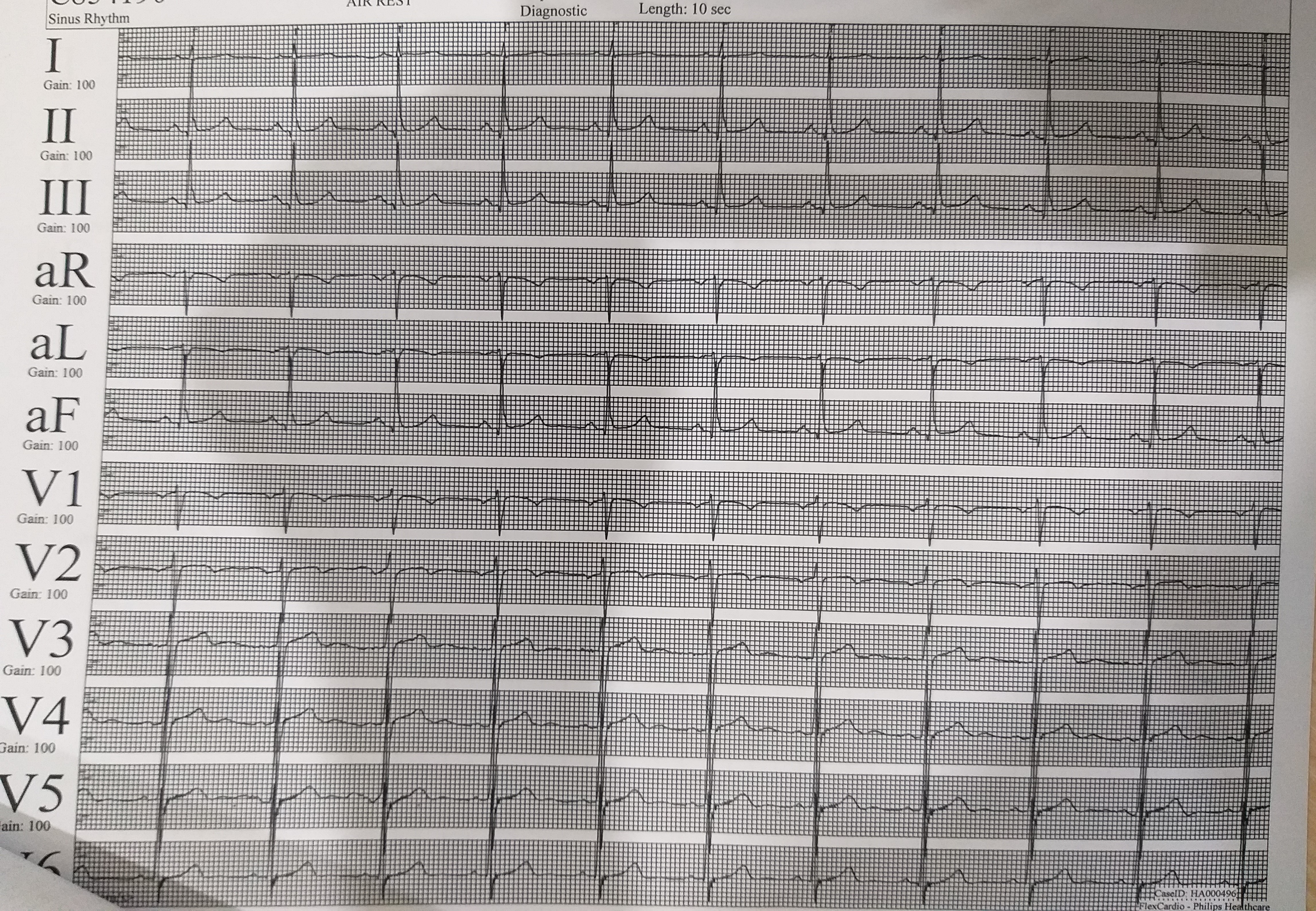CASE20210817_002
Dealing with Multiple Radial Artery Spasms
By ,
Presenter
Alvin Tonang
Authors
1, 1
Affiliation
, Indonesia1
Vascular Access (transradial) - Vascular Access
Dealing with Multiple Radial Artery Spasms
1, 1
, Indonesia1
Clinical Information
Patient initials or Identifier Number
S
Relevant Clinical History and Physical Exam
We presented a 65 years old male with stable angina pectoris CCS II andhypertension referred to our hospital. He had a history of NSTE-ACS about 2months ago. Physical examination was unremarkable, except for high bloodpressure, 160/100 mmHg. Resting ECG showed sinus rhythm, with heart rate 65 bpmwithout ST-T changes. Echocardiography showed good LV function with ejectionfraction of 62% and anterior regional wall motion abnormality


Relevant Test Results Prior to Catheterization
Relevant Catheterization Findings
Interventional Management
Procedural Step
We did angiography using rightradial approach, with 6 F sheath. Cocktail consists of heparin andnitroglycerin was used after insertion of the sheath. Angiography was doneusing 5 F Tiger catheter. RCA and LCX was normal, and we could see significant stenosis in the mid LAD with TIMI II flow (Vid 1-3). We did PCI using EBU 3,5 / 6 F guidecatheter. Successfully wiring the LAD using Runthrough Floppy wire, andpredilated using semi-compliant balloon Sapphire II 2,5 x 10 mmuntil 10 atm. We stented using DES Promus P 3,5 x 24 mm until14 atm (Vid 4-6). Final result showed no residual stenosis with TIMI IIIflow (Vid 7-8). The PCI was uneventful, thus we removed the guiding catheterusing 0,038 inch J-wire. After it was removed, suddenly patientfelt severe pain in his right arm. We could not remove the sheath in his rightarm. Contrast injection through radial sheath showed spasm in the radial artery(Vid 9). We gave 200 mcg nitroglycerin intraarterial through radial sheath,but the sheath still entrapped (Vid 10). Then, we tried to give200 mcg diltiazem through radial sheath. After couple of minutes we couldpartially removed the sheath before another restrain felt, then anothercontrast injection showed there were multiple spasms in radial artery (Vid 11). We gave another 200 mcg diltiazemthrough radial sheath, and another contrast injection we saw relieved some ofthe spasms (Vid 12-Image). After another couple of minutes, we finally could removed the sheath (Vid 13-14).
 Video1.avi
Video1.avi
 Video2.avi
Video2.avi
 Video3.avi
Video3.avi
 Video4.avi
Video4.avi
 Video5.avi
Video5.avi
 Video6.avi
Video6.avi
 Video7.avi
Video7.avi
 Video8.avi
Video8.avi
 Video9.avi
Video9.avi
 Video10.avi
Video10.avi
 Video11.avi
Video11.avi
 Video12.avi
Video12.avi
 Video13.avi
Video13.avi
 Video14.avi
Video14.avi
Case Summary
Radial artery spasm(RAS), defined as the temporary, sudden narrowing of the radial artery , is one of the mostfrequent trans-radial access (TRA) challenges. Intra arterial spasmolytic therapy commonly used to relieve RAS wasnitroglycerin and verapamil. Since verapamil was not available, we useddiltiazem and showed it has a potent vasodilatory effect to relieve multipleRAS. We also showed, that not only gentle rotation or manipulation, but removalof the catheter could also triggered RAS. Carefully remove and ensure yourJ-wire inside the catheter position coupled with gentle traction should alwaysbe done in TRA.
